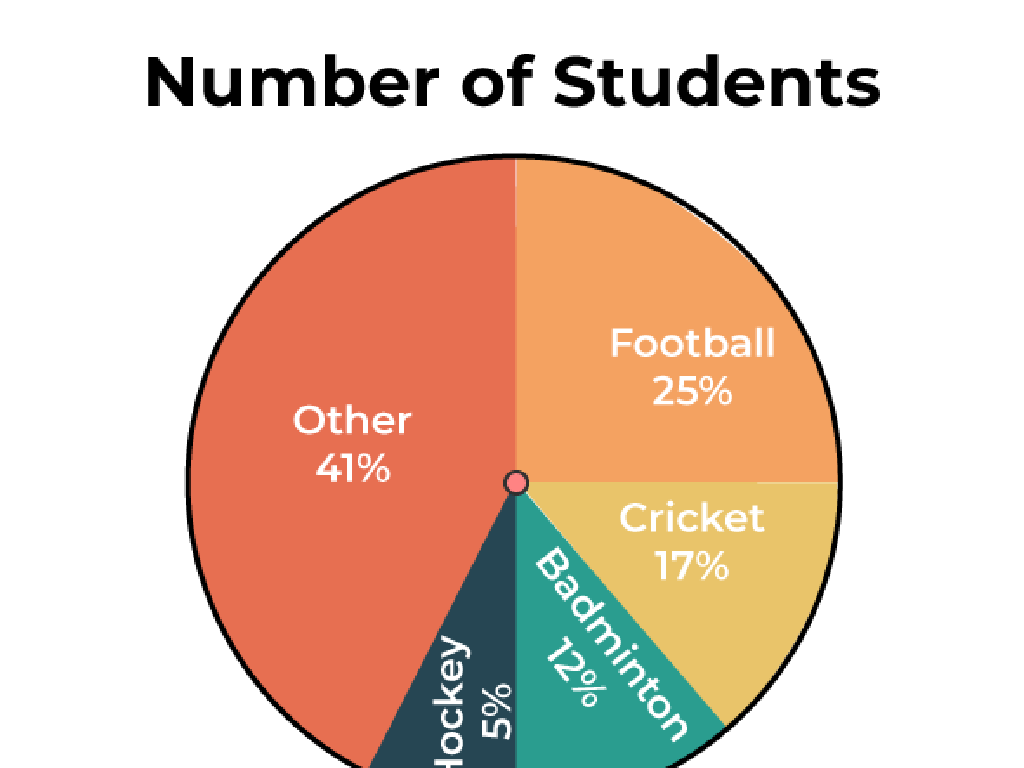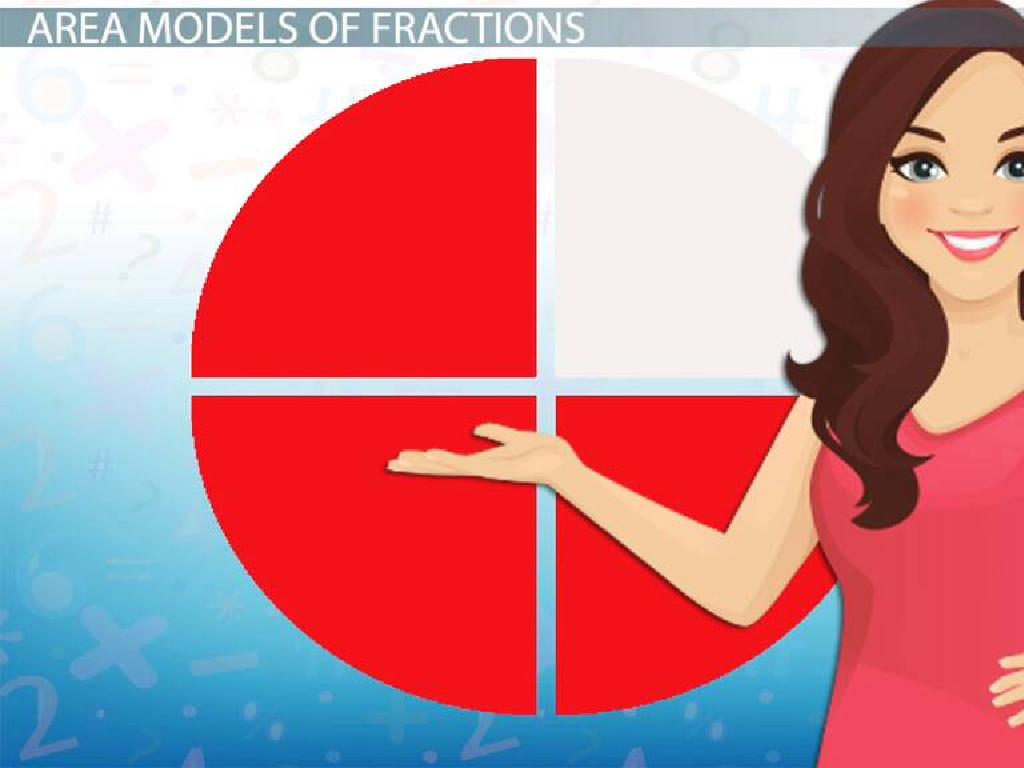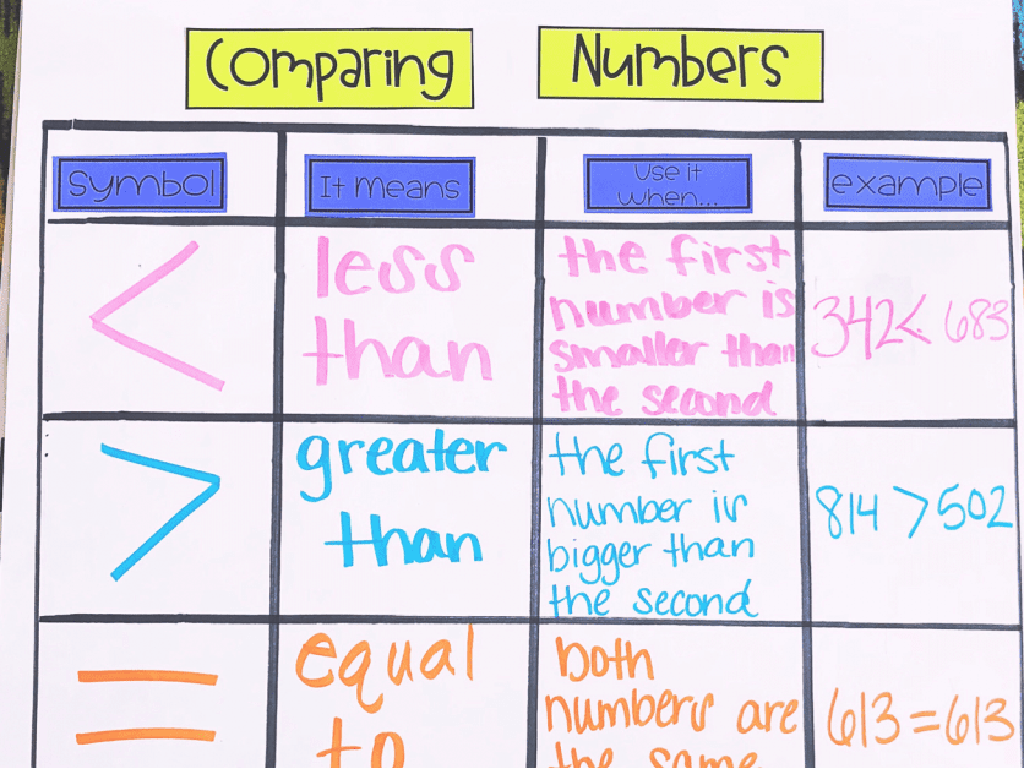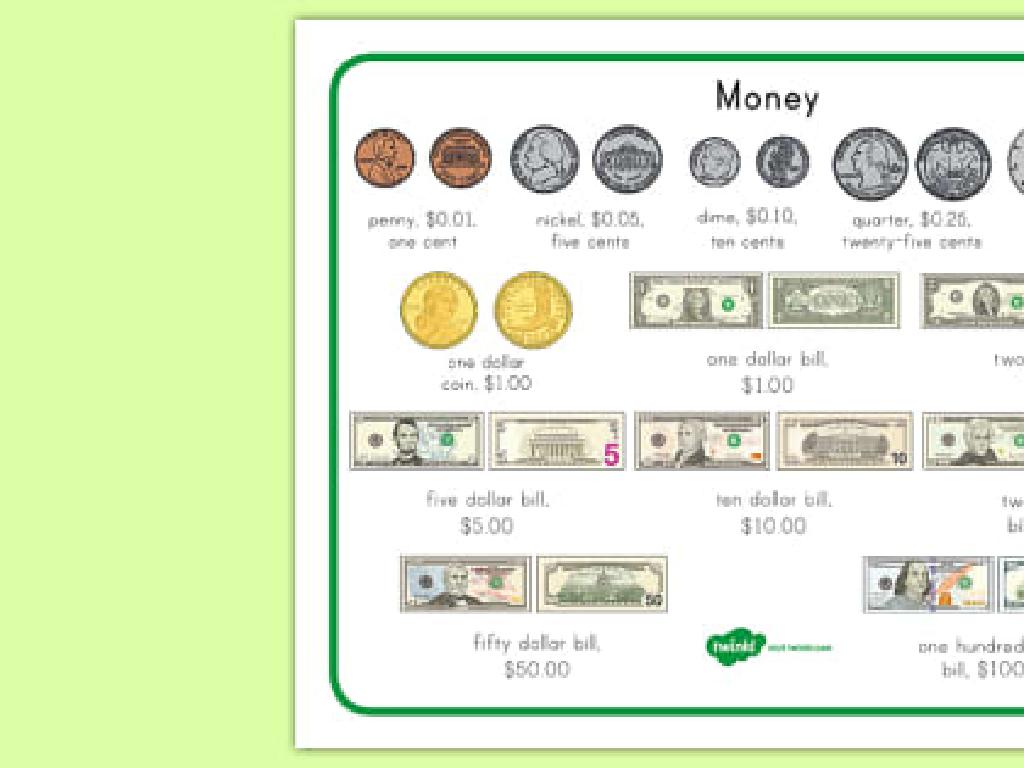Use Spelling Patterns To Sort Long And Short Vowel Words
Subject: Language arts
Grade: Second grade
Topic: Short And Long Vowel Patterns
Please LOG IN to download the presentation. Access is available to registered users only.
View More Content
Welcome to Vowel Town!
– Adventure in Vowel Town
– Short vs. Long Vowel Sounds
– Short vowels: ‘a’ as in ‘cat’, Long vowels: ‘a’ as in ‘cake’
– Vowels in Reading & Writing
– Vowels help us read words correctly & make sense of sentences
– Practice Sorting Vowels
– Sort words by vowel sounds to see patterns
|
This slide introduces the concept of short and long vowel sounds, which is fundamental for second graders to understand spelling patterns. Emphasize the importance of vowels in reading and writing, as they are the building blocks of words. Engage the students with the idea of going on an adventure in ‘Vowel Town’ where they will explore and sort words based on their vowel sounds. Provide examples of short and long vowel sounds and explain how they change the meaning of words. In the next class, have an activity where students sort a list of words into short and long vowel categories to reinforce their understanding. This hands-on practice will help solidify their knowledge of vowel sounds and their ability to recognize spelling patterns.
Exploring Vowels: Short and Long Sounds
– Meet the Vowels: A, E, I, O, U
– Vowels: Letters with two sounds
– Vowels can sound different, like ‘A’ in ‘cat’ (short) and ‘cake’ (long)
– Short vs. Long vowel sounds
– Short vowels: ‘a’ as in ‘apple’, Long vowels: ‘a’ as in ‘ape’
– Practice sorting vowel sounds
– We’ll sort words by their vowel sounds in a fun activity
|
This slide introduces the concept of vowels to second-grade students, emphasizing that vowels are unique because they can make more than one sound. Start by naming the vowels and then explain the difference between short and long vowel sounds with examples. Short vowels occur in words like ‘hat’, ‘bed’, ‘pig’, ‘cot’, and ‘mud’, while long vowels say their name, as in ‘cake’, ‘beet’, ‘bike’, ‘boat’, and ‘mule’. After the presentation, engage the students in a sorting activity where they categorize words based on the vowel sounds. This will help reinforce their understanding of the concept.
Exploring Short Vowel Sounds
– Short vowels: quick sounds
– Examples: ‘a’, ‘e’, ‘i’
– ‘a’ like in ‘apple’, ‘e’ in ‘egg’, ‘i’ in ‘igloo’
– Practice saying vowels
– Repeat sounds as a class activity
– Recognize short vowels in words
– Find and circle short vowel words in a story
|
This slide introduces students to the concept of short vowel sounds, which are brief and found in many common words. Start by explaining that short vowels are not held for a long duration when pronounced. Provide clear examples for each vowel sound and practice them as a class to ensure students can hear and repeat the sounds accurately. Engage the class in an activity where they say the vowel sounds together. Finally, help students apply their knowledge by recognizing and identifying short vowel sounds in words, which can be done through a fun activity where they find and circle words with short vowels in a story or passage.
Exploring Long Vowel Sounds
– Long vowels say their name
– Examples of long vowel sounds
– ‘a’ in ‘cake’, ‘e’ in ‘tree’, ‘i’ in ‘bike’
– Practice long vowel pronunciation
– Repeat after me: A-E-I-O-U
– Activity: Matching words to sounds
– Find words in your book that have long vowel sounds
|
This slide introduces students to the concept of long vowel sounds, which are vowels that say their name, such as the ‘a’ in ‘cake’. Provide clear examples for each vowel and practice saying them together as a class to reinforce correct pronunciation. For the activity, students can look through their favorite books to find and match words to their corresponding long vowel sounds. This will help them recognize the pattern in different words. Encourage students to share the words they find with the class, fostering a collaborative learning environment.
Sorting Words by Vowel Sounds
– Spelling patterns guide vowel sounds
– ‘ai’, ‘ee’, ‘ie’, ‘oa’, ‘ue’ are long vowels
– Examples: ‘rain’, ‘seed’, ‘pie’, ‘boat’, ‘blue’
– ‘rain’ has ‘ai’ which sounds like / /, ‘seed’ has ‘ee’ which sounds like / /
– Practice sorting words by vowel sound
– We’ll sort words into long or short vowel groups in class
|
This slide introduces the concept of spelling patterns and how they can indicate whether a vowel is long or short. Emphasize the common patterns for long vowels and provide clear examples for each. ‘ai’ as in ‘rain’, ‘ee’ as in ‘seed’, ‘ie’ as in ‘pie’, ‘oa’ as in ‘boat’, and ‘ue’ as in ‘blue’. Encourage students to listen for the vowel sounds and practice sorting words into long or short vowel categories. During the class, engage students with interactive sorting activities, using more examples to reinforce the concept.
Let’s Play the Vowel Sorting Game!
– Sort words by vowel sounds
– We’ll look at words and listen to the sounds vowels make
– Decide if each vowel is short or long
– Short vowels sound like: ‘a’ in apple, ‘e’ in bed
– Get ready to play our game
– Is everyone excited and ready?
– Listen carefully to the vowel sounds
– Long vowels say their name, like ‘a’ in cake, ‘i’ in kite
|
This interactive game is designed to help students distinguish between short and long vowel sounds in words. Display words one at a time and have students categorize them based on the vowel sounds. Encourage them to articulate why they think a vowel is short or long, reinforcing their understanding of spelling patterns. Provide examples and guide them through the first few words, then let them try on their own. This activity can be turned into a fun competition to see who can sort the words correctly the fastest, or it can be a collaborative class effort.
Let’s Practice Sorting Vowel Sounds!
– Drag words to long or short vowel column
– Pair up for sorting words
– Work with a classmate to sort words together
– Discuss your sorting choices
– Think about the vowel sounds in each word
– Share reasons with the class
|
This interactive activity is designed to help students recognize and differentiate between long and short vowel sounds in words. Set up two columns on the board or on a digital platform, one for long vowels and one for short vowels. Provide a list of words for students to sort. Encourage them to work in pairs to promote collaboration and discussion, which will aid in their understanding of the concept. After sorting, ask pairs to explain their reasoning for placing words in each column, fostering critical thinking and public speaking skills. As a teacher, be prepared to guide them and correct any misconceptions. Possible words for activity: ‘cake’ (long A), ‘cat’ (short A), ‘bike’ (long I), ‘bit’ (short I).
Class Activity: Vowel Flower Craft
– Create a Vowel Flower
– Short vowels on short petals
– Words like ‘cat’ and ‘bed’
– Long vowels on long petals
– Words like ‘cake’ and ‘seed’
– Decorate and share your flower
|
This activity is designed to help students differentiate between short and long vowel sounds through a creative craft. Provide each student with a flower template that has both short and long petals. Instruct them to write words with short vowel sounds on the shorter petals and words with long vowel sounds on the longer petals. Encourage creativity in decorating their flowers to make the activity enjoyable. Once completed, have a show-and-tell session where students can display their Vowel Flowers and explain the words they chose. This will reinforce their understanding of vowel sounds and spelling patterns. Possible variations of the activity could include using different colors for long and short vowels, adding additional petals for vowel blends, or creating a garden bulletin board to display all the flowers.
Mastering Vowel Sounds: Conclusion
– Congratulations on learning vowels!
– Spelling patterns improve literacy
– Recognizing patterns helps with reading and writing
– Practice makes perfect
– Keep practicing with different words
– Aim to become a vowel expert
|
This slide wraps up the lesson on short and long vowel sounds. Reinforce the idea that understanding and recognizing spelling patterns is crucial for developing reading and writing skills. Encourage the students to continue practicing these patterns outside of class to become more proficient. Remind them that mastery comes with practice and that they are well on their way to becoming vowel experts. You can suggest fun activities like vowel scavenger hunts or word sorting games to make practice enjoyable.






